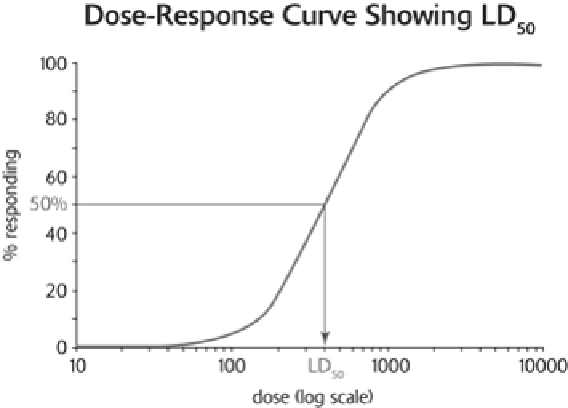Environmental Engineering Reference
In-Depth Information
Acute and Chronic Effects
The health and environmental effects of pollution vary depending on levels, the individual, the location, veget-
ation types, climate, and many other factors.
Indoor Air Pollutants
Indoor air pollution can have a wide range of health effects. Here are the major hazards:
•
Radon
is an extremely toxic radioactive gas that occurs naturally. Exposure generally occurs after it
seeps into basements from the bedrock. Radon can be detected with the proper equipment, but without a
detection kit it can build up in an enclosed space and eventually lead to lung cancer. Radon exposure is
considered the second leading cause of lung cancer, next to tobacco smoke.
•
Asbestos
threats occur when a product containing asbestos is damaged, which releases the tiny asbestos
particles into the air. When inhaled, these particles can lodge in the lungs, which produce acid to fight
the invaders, ultimately scarring the lung tissue. Long-term exposure can lead to asbestosis, which is a
decrease in lung function due to scarred lungs. Asbestos is also classified as a carcinogen. Mesothelioma
is the result of asbestos damaging major organs of the human body. It is often a fatal condition. Before
its impact on human health was discovered and acknowledged, asbestos was widely used to insulate
pipes, for soundproofing, as vehicle brake shoes, as a fire retardant, among many other uses.
•
Tobacco smoke
is produced from cigarettes, pipes, and cigars and is the leading cause of lung cancer.
There are many toxic chemicals found in tobacco smoke including butane, hydrogen cyanide, arsenic,
lead, carbon monoxide, and ammonia. Both the smoking of tobacco and exposure to secondhand smoke
are dangerous, and secondhand smoke actually contains higher concentrations of chemicals because it
does not pass through cigarette filters before being inhaled.
•
Lead and mercury
can be toxic if buildup occurs in body tissue. Exposure to small amounts of lead can
cause minor symptoms such as headaches, fatigue, and nausea, but larger exposure to lead can affect
brain development of fetuses. Heavy metals contain neurotoxins, which can affect the nervous system.

